The Association of University Technology Managers (AUTM) annual meeting will start tomorrow in New Orleans. With this in mind, today we continue our recent coverage of university patenting with a look at the Wisconsin Alumni Research Foundation (WARF). Founded in 1925, WARF serves as the tech transfer organization for the University of Wisconsin-Madison. It manages a $2.6 billion endowment and supports innovation at UW-Madison by obtaining patent rights for the university’s discoveries and licensing those patents commercially.
For the past 90 years WARF has promoted scientific research and innovation at UW-Madison and has earned more than $800 million in patent royalty revenues over the years and has generated $1.25 billion in revenue for the institution. The organization has helped to bring many life-changing technologies developed by UW-Madison to the market, including Harry Steenbock’s method of irradiating foodstuffs with ultraviolet light to enrich their vitamin D content, invented in the 1920s and credited for helping to eliminate rickets. Other innovations marketed successfully by WARF include Warfarin, a medication used worldwide to treat vascular and heart diseases, and pluripotency in embryonic stem cells.
The Wisconsin Alumni Research Foundation has held an important place in the history of university research and patenting activities in academic research facilities all over America, especially regarding the formation of the Bayh-Dole Act of 1980. In 1978, longtime WARF patent attorney Howard Bremer was part of a coterie of university professionals from all over America who were instrumental in working to help pass the landmark Bayh-Dole legislation. In fact, it is not at all a stretch to call Howard Bremer the father of university licensing, particularly in the life sciences sector.
Indeed, at one of the last Association of University Technology Managers (AUTM) annual meetings Bremer attended one industry insider mused during a private discussion about whether people in attendance knew that they largely owed their jobs to the hard work of Bremer and his fellow compatriots in the university community who did so much to create the industry. Just then, someone walked up to Bremer just to shake his hand and meet him.
Bremer would go to Washington, DC, and along with Norman Latker, who was patent counsel at the National Institutes of Health (NIH), meet with Senator Bayh in an effort to convince Bayh something needed to be done to streamline the process of getting university developed technologies into the marketplace to benefit consumers. Bremer and Latker were successful, Senator Bayh became a champion for university research. Over the pendency of the legislation Bremer and Latker worked closely with Joseph Allen, then a member of Sen. Birch Bayh’s staff, to help get the legislation across the finish line. Since then Bayh-Dole has released the patents on federally-funded inventions to universities, and the experiment of university owned patent rights has been successful beyond anyone’s wildest expectations.
Unfortunately, Bremer passed in 2013, but we have a profile on Howard Bremer penned by Joseph Allen memorializing this WARF legend. Senator Bayh was able to honor Bremer one last time for the role he played in what The Economist has called the most successful piece of domestic legislation in the U.S. post World War II. Bremer received a special award presented by Senator Bayh himself on the 30th anniversary of Bayh-Dole in 2010.
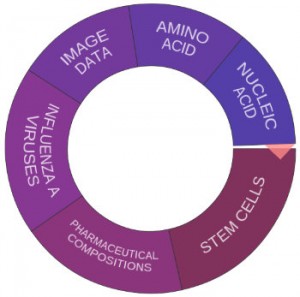 WARF’s success spans well beyond the critical role Bremer played in the enactment of Bayh-Dole, and can be seen in how the University of Wisconsin-Madison stacks up against research universities from across the world. In 2013, UW-Madison placed 6th globally among all universities receiving U.S. patents that year with 160 patents; prostate cancer vaccines, clean compression engines and prosthetic device control were among the technologies protected. WARF maintains a list of newly acquired patents on its website and also offers information on its patent portfolios in injection molding and compression ignition tech.
WARF’s success spans well beyond the critical role Bremer played in the enactment of Bayh-Dole, and can be seen in how the University of Wisconsin-Madison stacks up against research universities from across the world. In 2013, UW-Madison placed 6th globally among all universities receiving U.S. patents that year with 160 patents; prostate cancer vaccines, clean compression engines and prosthetic device control were among the technologies protected. WARF maintains a list of newly acquired patents on its website and also offers information on its patent portfolios in injection molding and compression ignition tech.
Checking in quickly with our Innography research tools we see that WARF received a total of 151 U.S. patents throughout 2014. A quick look at our text cluster of patent subjects shows us that research at UW-Madison in recent months has been focused on stem cells, the influenza A virus, pharmaceutical compositions and various biotechnology related innovations.
What follows is a snapshot review of some of the recent patent activity at the University of Wisconsin.
[Bio-Pharma]
WARF’s Issued Patents: From Stem Cell Culturing to Meltier Cheese Products
In the list of U.S. patents recently issued to WARF, we noticed a fair number of technologies related to research into stem cells. Novel treatments for cardiovascular treatments and disorders could be the result of the technology disclosed and protected by U.S. Patent No. 8951798, which is titled Generation of Cardiomyocytes From Human Pluripotent Stem Cells. The method for generating a population of human cardiomyocyte progenitors Wnt protein/beta-catenin signaling in human pluripotent stem cells by culturing those cells in the presence of Gsk3 inhibitor to obtain a first cell population and inhibiting Wnt protein/beta-catenin signaling in the first cell population to obtain a second cell population comprising human cardiomyocyte progenitors. This technology improves upon conventional methods of creating human cardiomyocytes from stem cells, which only created a limited percentage of cardiomyocytes of the amount of stem cells used. A culturing unit which is better designed for culturing and differentiating stem cells is at the center of
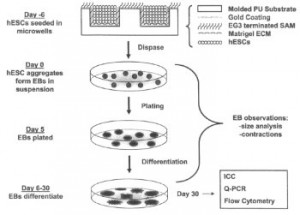 U.S. Patent No. 8956867, issued under the title Method for Culturing Stem Cells. This patent claims a method of culturing human pluripotent stem cells to obtain a contracting embryoid body, at least half of which expresses MF20 or MLC2a by harvesting substantially undifferentiated pluripotent stem cells from a microwell constraining cell growth in three dimensions and differentiating the harvested stem cells under unconstrained culture conditions for a period sufficient to form a population of embryoid bodies. This innovation enables two-dimensional self-assembled monolayers to serve as culture sites for stem cells while addressing issues related to the three-dimensional growth of stem cells during culturing.
U.S. Patent No. 8956867, issued under the title Method for Culturing Stem Cells. This patent claims a method of culturing human pluripotent stem cells to obtain a contracting embryoid body, at least half of which expresses MF20 or MLC2a by harvesting substantially undifferentiated pluripotent stem cells from a microwell constraining cell growth in three dimensions and differentiating the harvested stem cells under unconstrained culture conditions for a period sufficient to form a population of embryoid bodies. This innovation enables two-dimensional self-assembled monolayers to serve as culture sites for stem cells while addressing issues related to the three-dimensional growth of stem cells during culturing.
 Agricultural and food production innovations were also featured in a couple of patents that caught our attentions today. WARF now holds a plant patent for a cranberry tree with a number of improved characteristics thanks to the issue of U.S. Patent No. PP25066, which is titled Cranberry Plant Named ‘WI92-A-X15’. The new and distinct variety of the cranberry plant claimed by this patent produces significantly higher yields, a larger fruit size, high red pigmentation and an ability to produce excellent crops at an earlier age than the leading commercial cultivar of cranberry plant. The dairy industry will also be able to produce cheese products with improved characteristics as a result of the technology protected by U.S. Patent No. 8889208, which is titled Purification of Beta Casein From Milk. The method for obtaining beta-casein from milk claimed here involves cooling a first milk to between 1? and 6?, using microfiltration to form a first beta-casein enriched permeate and a first beta-casein depleted retentate, separating a second milk using a first ultrafiltration to obtain a first ultrafiltered permeate, combining and cooling the casein-depleted retentate and the ultrafiltered permeate to release beta-casein from micelles; a number of cooling and separation processes follow this part of the invented method. By reducing the amount of beta-casein from milk, dairy producers are able to create a cheese with improved meltability and reduced bitterness.
Agricultural and food production innovations were also featured in a couple of patents that caught our attentions today. WARF now holds a plant patent for a cranberry tree with a number of improved characteristics thanks to the issue of U.S. Patent No. PP25066, which is titled Cranberry Plant Named ‘WI92-A-X15’. The new and distinct variety of the cranberry plant claimed by this patent produces significantly higher yields, a larger fruit size, high red pigmentation and an ability to produce excellent crops at an earlier age than the leading commercial cultivar of cranberry plant. The dairy industry will also be able to produce cheese products with improved characteristics as a result of the technology protected by U.S. Patent No. 8889208, which is titled Purification of Beta Casein From Milk. The method for obtaining beta-casein from milk claimed here involves cooling a first milk to between 1? and 6?, using microfiltration to form a first beta-casein enriched permeate and a first beta-casein depleted retentate, separating a second milk using a first ultrafiltration to obtain a first ultrafiltered permeate, combining and cooling the casein-depleted retentate and the ultrafiltered permeate to release beta-casein from micelles; a number of cooling and separation processes follow this part of the invented method. By reducing the amount of beta-casein from milk, dairy producers are able to create a cheese with improved meltability and reduced bitterness.
UW-Madison is also involved in research focused on biofuels, as is evidenced by the issue of U.S. Patent No. 8945902, entitled Combinatorial Discovery of Enzymes With Utility in Biomass Transformation. The polypeptide protected by this patent includes a complete and specific amino acid sequence. This polypeptide is useful to determine practical enzymes to be used for the deconstruction of biomass into biofuel, a complex procedure for which no single enzyme can produce a sustainable and economical biofuel as of yet.
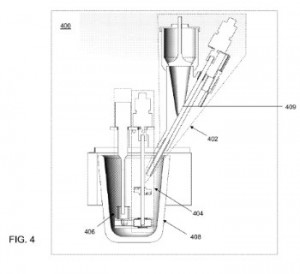 Industry-scale nanotechnology is also supported by UW-Madison innovations as we can see within U.S. Patent No. 8865057, titled Apparatus and Methods for Industrial-Scale Production of Metal Matrix Nanocomposites. The apparatus for the production of metal matrix nanocomposites protected here includes a production chamber in a cavity, a nanoparticle feeding system, a mixing system that applies an axial shear force to nanoparticle agglomerates entering a molten metal head, a cavitation system for creating a cavitation zone within the molten metal head and a pumping conduit that conducts a flow of molten metal. This innovation increases the scale of production for metal matrix nanocomposites, which have many industrial applications, beyond what can be produced in laboratory settings.
Industry-scale nanotechnology is also supported by UW-Madison innovations as we can see within U.S. Patent No. 8865057, titled Apparatus and Methods for Industrial-Scale Production of Metal Matrix Nanocomposites. The apparatus for the production of metal matrix nanocomposites protected here includes a production chamber in a cavity, a nanoparticle feeding system, a mixing system that applies an axial shear force to nanoparticle agglomerates entering a molten metal head, a cavitation system for creating a cavitation zone within the molten metal head and a pumping conduit that conducts a flow of molten metal. This innovation increases the scale of production for metal matrix nanocomposites, which have many industrial applications, beyond what can be produced in laboratory settings.
[Companies-1]
Patent Applications of Note: From Biofuel Production to Treating Traumatic Brain Injury
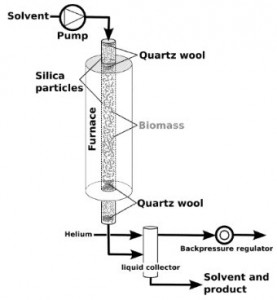 Research and development in biofuels were reflected by a number of the patent applications which we saw WARF filing on behalf of the University of Wisconsin-Madison. The use of E. coli to improve biofuel production is the subject of U.S. Patent Application No. 20140370594, which is titled Biological Conversion of Biomass-Derived Sugars to Value Added Chemicals. The method of growing a microorganism claimed here involves culturing the microorganism in a growth medium comprising an aqueous solution of carbohydrates, which is made by reacting biomass or a biomass-derived reactant with a solvent system containing an organic solvent and water in the presence of an acid catalyst for a time. The method also involves partitioning or extracting the product mixture into an organic layer and a substantially immiscible aqueous layer. The culturing process for E. coli, or yeast in some embodiments, enables the production of ethanol, fatty acids and other useful chemicals from biomass. Modification to biomass crops that also improve biofuel production processes is featured by U.S. Patent Application No. 20140366213, filed under the title Modifying Flowering Time in Maize. The polynucleotide molecule that would be protected includes various polypeptide sequences which regulate flowering time in maize. This innovation allows maize to remain longer in its juvenile stage, where its tissues are more easily converted into biomass and the plant is also more suitable as a feedstock.
Research and development in biofuels were reflected by a number of the patent applications which we saw WARF filing on behalf of the University of Wisconsin-Madison. The use of E. coli to improve biofuel production is the subject of U.S. Patent Application No. 20140370594, which is titled Biological Conversion of Biomass-Derived Sugars to Value Added Chemicals. The method of growing a microorganism claimed here involves culturing the microorganism in a growth medium comprising an aqueous solution of carbohydrates, which is made by reacting biomass or a biomass-derived reactant with a solvent system containing an organic solvent and water in the presence of an acid catalyst for a time. The method also involves partitioning or extracting the product mixture into an organic layer and a substantially immiscible aqueous layer. The culturing process for E. coli, or yeast in some embodiments, enables the production of ethanol, fatty acids and other useful chemicals from biomass. Modification to biomass crops that also improve biofuel production processes is featured by U.S. Patent Application No. 20140366213, filed under the title Modifying Flowering Time in Maize. The polynucleotide molecule that would be protected includes various polypeptide sequences which regulate flowering time in maize. This innovation allows maize to remain longer in its juvenile stage, where its tissues are more easily converted into biomass and the plant is also more suitable as a feedstock.
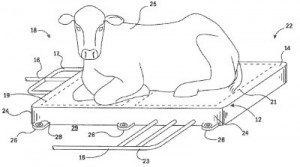 Inventions aimed at improving the care and condition of livestock were explained within a pair of patent applications that we wanted to share with our readers today. A system for controlling the comfort of cattle as they’re kept within stables is discussed by U.S. Patent Application No. 20140374056, which is titled Stall Floor Heat Exchanger Reducing Heat Stress and Lameness. The heat exchanger for livestock claimed here includes an elastic mat sized to substantially support a reclining dairy cow, an elastic channel incorporated beneath the upper surface of the mat, an inlet connected to both the elastic channel and a water supply. The elastic channel of this invention is configured so that water is conducted over an area substantially greater than the elastic channel to cool a dairy cow that is reclining on the mat. Greater research into viral diseases affecting livestock, specifically horses, is enabled by the technology that would be protected by U.S. Patent Application No. 20140377296, which is titled H3 Influenza A Virus. The patent application claims an isolated H3 influenza virus which has a specific gene sequence as well as a method of immunizing a mammal against influenza by administering an amount of the isolated virus capable of inducing a prophylactic or a therapeutic response against influenza. The invention is designed to mitigate the substantial morbidity and economic losses suffered each year by horse owners as a result of their horses contracting influenza.
Inventions aimed at improving the care and condition of livestock were explained within a pair of patent applications that we wanted to share with our readers today. A system for controlling the comfort of cattle as they’re kept within stables is discussed by U.S. Patent Application No. 20140374056, which is titled Stall Floor Heat Exchanger Reducing Heat Stress and Lameness. The heat exchanger for livestock claimed here includes an elastic mat sized to substantially support a reclining dairy cow, an elastic channel incorporated beneath the upper surface of the mat, an inlet connected to both the elastic channel and a water supply. The elastic channel of this invention is configured so that water is conducted over an area substantially greater than the elastic channel to cool a dairy cow that is reclining on the mat. Greater research into viral diseases affecting livestock, specifically horses, is enabled by the technology that would be protected by U.S. Patent Application No. 20140377296, which is titled H3 Influenza A Virus. The patent application claims an isolated H3 influenza virus which has a specific gene sequence as well as a method of immunizing a mammal against influenza by administering an amount of the isolated virus capable of inducing a prophylactic or a therapeutic response against influenza. The invention is designed to mitigate the substantial morbidity and economic losses suffered each year by horse owners as a result of their horses contracting influenza.
A few other medical technologies caught our eyes during our most recent survey of WARF’s patent applications. Novel methods of assessing fertility in living subjects across a wide range of mammals can be seen in U.S. Patent Application No. 20150024385, filed under the title Prediction of Fertility in Males. The patent application claims a method for evaluating sperm fertility by obtaining a sample of sperm from an animal of a species, staining the sample with a fluorescent DNA-binding dye, collecting at least one image of the stained sample, measuring an intensity of the DNA-binding dye within a sperm’s nucleus, determining an average intensity per unit area and comparing that figure to average intensity per unit area figures for both high-fertility and low-fertility sperm. This method can be used to test male fertility for humans, bulls, boars, horses, rams or dogs. The incredible complexity of traumatic brain 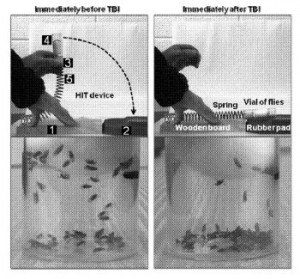 injury makes it difficult to treat in humans but advances in combating brain injury are featured within U.S. Patent Application No. 20140377183, titled Methods, Systems, and Devices for an Invertebrate Model of Traumatic Brain Injury. The patent application claims an in vivo screening method for identifying a candidate therapeutic agent for treatment or prevention of traumatic brain injury by subjecting individuals of an invertebrate species having a brain to a controlled impact, dosing the individuals with a test agent before or after the impact, assessing an impact-associated phenotype in the dosed individuals following dosing and impact and indicating that the test agent is a candidate therapeutic agent for treating or preventing traumatic brain injury if the impact-associated phenotype is reduced relative to the presence of that phenotype in individuals that haven’t been dosed. This controlled impact system for testing therapeutic agents in Drosophila flies subjected to traumatic brain injuries is designed to better identify treatments for neurological disorders associated with those injuries.
injury makes it difficult to treat in humans but advances in combating brain injury are featured within U.S. Patent Application No. 20140377183, titled Methods, Systems, and Devices for an Invertebrate Model of Traumatic Brain Injury. The patent application claims an in vivo screening method for identifying a candidate therapeutic agent for treatment or prevention of traumatic brain injury by subjecting individuals of an invertebrate species having a brain to a controlled impact, dosing the individuals with a test agent before or after the impact, assessing an impact-associated phenotype in the dosed individuals following dosing and impact and indicating that the test agent is a candidate therapeutic agent for treating or preventing traumatic brain injury if the impact-associated phenotype is reduced relative to the presence of that phenotype in individuals that haven’t been dosed. This controlled impact system for testing therapeutic agents in Drosophila flies subjected to traumatic brain injuries is designed to better identify treatments for neurological disorders associated with those injuries.
WARF is also a joint assignee on a patent application filed with the U.S. Department of Agriculture for a process of producing poultry products that are less susceptible to bacterial contamination. U.S. Patent Application No. 20150037277, which is titled Methods of Reducing Salmonella in Poultry, claims a method of reducing Salmonella in the intestines of poultry by administering to a poultry bird an effective amount of an interleukin-10 peptide or an isolated antibody binding specifically to an interleukin-10 peptide and administering that amount within one to four weeks of harvesting the poultry. The method provided is an antibiotic-free technique for reducing the incidence of Salmonella in poultry products, especially ground turkey, to increase the standards of food safety.

![[IPWatchdog Logo]](https://ipwatchdog.com/wp-content/themes/IPWatchdog%20-%202023/assets/images/temp/logo-small@2x.png)
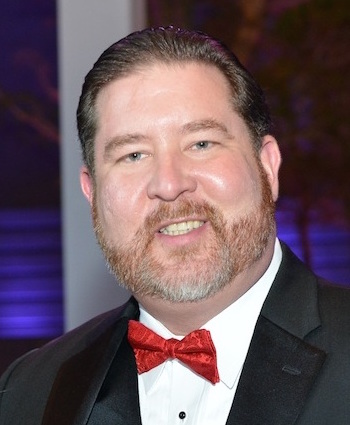
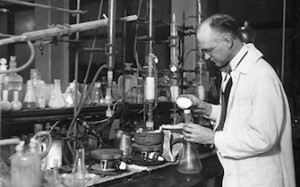
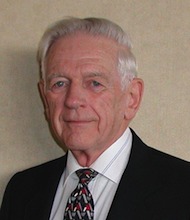
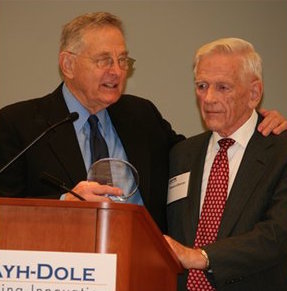
![[Advertisement]](https://ipwatchdog.com/wp-content/uploads/2024/04/Artificial-Intelligence-2024-REPLAY-sidebar-700x500-corrected.jpg)
![[Advertisement]](https://ipwatchdog.com/wp-content/uploads/2024/04/UnitedLex-May-2-2024-sidebar-700x500-1.jpg)
![[Advertisement]](https://ipwatchdog.com/wp-content/uploads/2024/04/Patent-Litigation-Masters-2024-sidebar-700x500-1.jpg)

![[Advertisement]](https://ipwatchdog.com/wp-content/uploads/2021/12/WEBINAR-336-x-280-px.png)
![[Advertisement]](https://ipwatchdog.com/wp-content/uploads/2021/12/2021-Patent-Practice-on-Demand-recorded-Feb-2021-336-x-280.jpg)
![[Advertisement]](https://ipwatchdog.com/wp-content/uploads/2021/12/Ad-4-The-Invent-Patent-System™.png)






Join the Discussion
One comment so far.
Jeffrey Grayzel
February 23, 2015 01:57 pmThe University of Wisconsin has done some great stuff. Too bad Governor Scott Walker has now cut so much funding to the University. it will be hard for the school to continue their innovative leadership now.